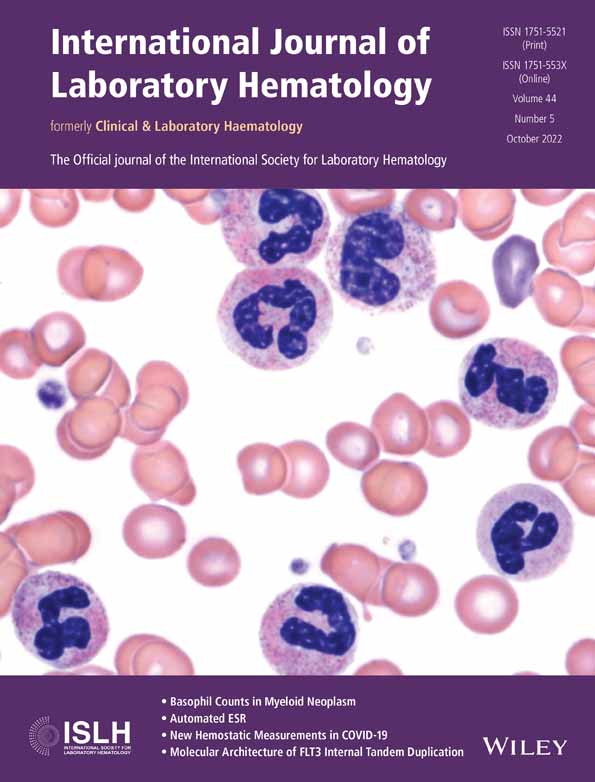Somatic mosaicism in patients with Fanconi anaemia: Proposal of alternative tissue for inconclusive diagnoses
Funding information: Associação Alírio Pfiffer/Instituto TMO
Abstract
Introduction
Fanconi anaemia (FA) is a rare genetic disorder marked by progressive bone marrow failure, chromosomal fragility, and increased cancer susceptibility. Laboratory diagnosis includes chromosomal instability test and mutation investigation. A total of 15%–25% of all patients may have somatic mosaicism, characterized by two distinct haematopoietic cell populations, one resistant and one sensitive to agents that induce chromosomal breakage, which complicates the diagnosis by a high incidence of reverted cells leading to inconclusive or false-negative results. The study aimed to evaluate the use of bone marrow stromal mesenchymal cells (BM-MSCs) as an alternative, non-haematopoietic tissue for diagnosis.
Methods
Bone marrow mesenchymal stromal cells from 12 patients with positive diepoxybutane (DEB) tests were cultivated and analysed by cytogenetics and mutation investigation.
Results
The DEB test was performed at 0.1 and 0.01 μg/ml concentrations, with an index ranging from 0.24 to 1.00. At higher concentration, the metaphases number was lower, probably due to toxicity. Regarding the molecular investigation, all the mutations previously found in peripheral blood were identified on BM-MSC.
Conclusion
This study demonstrated the possibility of using BM-MSCs as an alternative tissue for cytogenetic and molecular investigation. Future tests using an intermediate DEB concentration may lead to an optimal protocol that could be non-toxic to cells but provides conclusive results.
CONFLICT OF INTEREST
None of the co-authors has any conflicts of interest to report.
Open Research
DATA AVAILABILITY STATEMENT
The data that support the findings of this study are available on request from the corresponding author. The data are not publicly available due to privacy or ethical restrictions.




